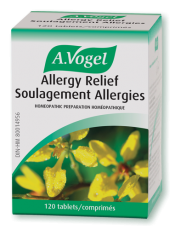Why are my lips swollen?
If you suffer from hayfever, you may be anticipating symptoms like a runny nose or a dry, tickly cough, but swollen lips? This is a more unusual symptom and quite often it can be alarming because it’s so unexpected.
Hayfever is essentially an allergy to pollen, and when your immune system identifies pollen as an irritant, it will release a wave of inflammatory chemicals called histamines. These chemicals can linger and cause edema, or swelling of the skin tissues. In most cases this type of swelling occurs around your eyes but can sometimes also affect your lips.
Nevertheless, many still worry that what they are experiencing is a sign of anaphylaxis, a severe and life-threatening allergic reaction that can cause your throat, tongue and lips to swell, hindering your ability to breathe.
What is anaphylaxis?
Anaphylaxis, as I have mentioned, is a serious and potentially life-threatening allergic reaction. If you’re suffering from anaphylactic shock, seek medical attention immediately. It can come on very suddenly but it is often accompanied by easy-to-recognize symptoms such as:
- Trouble breathing
- Wheezing
- Flushed skin
- Swelling of the throat and mouth
- Abdominal pain
- Vomiting
- Increased heart rate
- Loss of consciousness
If you aren’t suffering from anaphylaxis—if you’re taking the time to read this article, you probably aren’t—the far more likely cause of your swollen lips is angioedema.
What is angioedema?
Angioedema is a type of swelling that takes place beneath the surface of your skin. When your immune system instigates an inflammatory reaction, chemicals like histamine can cause your blood vessels to swell. Sometimes fluid can escape from these tiny vessels, leaking into your skin tissues. A couple of common symptoms include:
- Swelling around the eyes, lips and hands
- Hives
- Allergic conjunctivitis
Angioedema frequently appears alongside hives, giving rise to the idea that the two conditions are one and the same. However, hives affects the epidermal layer of skin whereas angioedema tends to influence the subcutaneous skin tissues. Angioedema can also appear without hives, although such instances are rare.
According to the Canadian Hereditary Angioedema Society, it is estimated that about 1 in 10,000 to 1 in 50,000 people worldwide have Hereditary Angioedema (HAE) and affects women and men just about equally. Most patients experience their first attack during childhood or adolescence.
In episodes of severe angioedema, though, your throat and tongue can be affected, so it’s always a good idea to keep an eye on your symptoms. If you notice that you’re starting to feel faint or you’re suffering from diarrhea or abdominal cramps, speak to your doctor as soon as possible.
What causes angioedema?
Angioedema can be triggered by a variety of factors, including food allergens and your genetics. So what’s this got to do with hayfever?
Pollen can be to blame for angioedema, sometimes inspiring skin irritation upon direct contact. However, pollen can also increase your chances of developing angioedema in an unexpected way – your food.
This is where pollen food syndrome comes into the equation. Simply put, when your immune system becomes hyperactive it can start to recognize pollen proteins as irritants. Unfortunately, these pollen proteins, known as profilins, are also found in certain types of food.
Ingesting these foods can trigger acute allergic angioedema, which can cause your skin tissues to swell, usually within an hour or so of consuming the allergen.
How long does angioedema last?
Normally, angioedema doesn’t last long and the symptoms tend to fade within a couple of days. If they don’t and your lips are still swollen, you should speak to your doctor.
How to treat swollen lips
No matter what causes your lips to swell, the truth is that it can really knock your confidence, especially if you are frequently in the public eye.
In most cases, you’ll be advised to take over-the-counter antihistamines to reduce the swelling. However, there are a range of natural and herbal remedies that can help ease inflammation and hopefully reduce any visual symptoms. Here are some of our favourites.
1 – Avoid allergens: This may seem like an obvious one but bear with me; when it comes to preventing inflammation, things can get tricky, especially if you add pollen food syndrome to the mix. If you suffer from hayfever, you’re probably aware that you should be taking precautions against pollen, but if your food is to blame it can become hard to figure out exactly which food is triggering a reaction. The best thing you can do is try to recognize certain patterns: foods such as tomatoes, oranges and celery can be associated with grass pollen, which is responsible for 95% of hayfever sufferers’ symptoms, so it might be worth avoiding these! You could try cooking your vegetables instead of eating them raw—we’ve got plenty of delicious soup recipes if you’re looking for ideas!
2 – Drink plenty of water: Water is extremely important if you’re trying to fight inflammation. If you become dehydrated, you risk making things a lot worse for yourself. Some have suggested a relationship between histamine production and dehydration, with your production of histamine increasing as you become increasingly dehydrated. Not to mention that your skin will be far more vulnerable if it’s not properly hydrated, making it more susceptible to damage and swelling.
3 – Coconut oil: Coconut oil is really amazing, not just for cooking but also for your skin! It’s a natural anti-inflammatory agent as well as an emollient that helps keep your lips hydrated and helps prevent lasting damage. Covering your lips in a little coconut oil can also help protect them from allergens such as pollen as the oil provides a natural barrier. I’d even recommend spreading a little on the inside of your nostrils too, just to keep pollen from entering your respiratory system!
4 – Cold/warm compresses: Either a cold or a warm compress can work wonders when combatting inflammation. A cold compress can be useful for reducing swelling, whereas a warm one is handier for stimulating your circulation and helping to prevent blood from collecting in the affected area. It’s important that you use these compresses in moderation though, as prolonged exposure to either hot or cold temperatures may do more harm than good.
5 – Turmeric: Not just a brightly coloured spice, turmeric is naturally rich in anti-inflammatory and antiseptic properties, making it a great option for reducing swelling. You can mix it into a paste by combining it with water—just be aware that a little turmeric goes a long way. I sometimes mix turmeric with coconut oil to make a super-nutritious face mask that’s chock full of antioxidants and anti-inflammatory properties!
6- Try A.Vogel Allergy Relief: Allergy Relief tablets are great for warding off many of the typical hayfever symptoms. Each tablet is specially prepared using a blend of seven tropical herb extracts and is perfect for treating symptoms of allergic rhinitis and hayfever. It’s 100% non-drowsy and you can continue to take it for as long as you need to.
References:
http://www.umm.edu/health/medical/altmed/condition/angioedema
https://www.haecanada.org/about-hae/what-is-hae/
http://www.waterbenefitshealth.com/symptoms-of-chronic-dehydration.html





